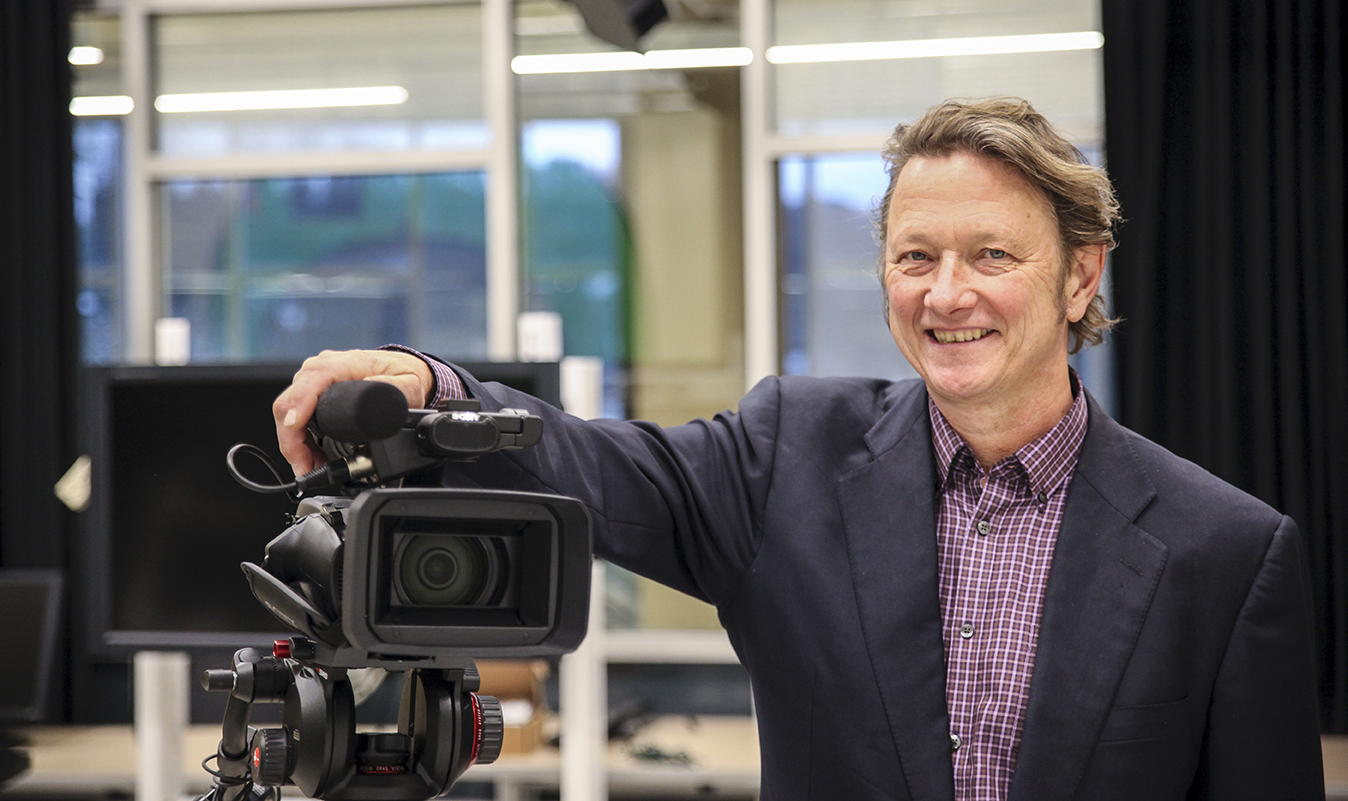

The 21st-century classroom
The first question that Larry Hess asks faculty seeking his help integrating technology into their coursework is, “If you ran into a student who took your course five to seven years from now, what would you want them to remember from your class?”
Kaitlyn Pacheco, BSJ '17 | February 20, 2020
Share:
Hess, an instructional designer with the Office of Instructional Innovation (OII), calls this his “big idea” question, and it echoes OII’s mission to enhance student learning experiences by bringing emerging tech into the classroom.
“To maintain an edge within delivering innovative instruction, we have to be willing to try new things,” Hess says.
After establishing professors’ goals and objectives for their course, OII instructional designers and technologists help them determine which tools—like discussion boards, VoiceThread, or TopHat—would fit with how they want students to engage with the course material.
When Hess collaborated with Elizabeth Wanless on Intro to Analytics, a graduate course in the College of Business’s Master of Sports Administration Program, they focused on creating assessment experiences that would mimic how a sports administration professional would use analytics. The pair developed a business memo-like prompt that asks students to perform data-driven tasks based on what they learned that week, similar to how a future boss might assign assessments.

Elizabeth Wanless, assistant professor in the College of Business's Master's of Sports Administration Program, has leveraged OII-produced tech in her classroom. Photo by Ellee Achten, BSJ ’14, MA ’17
Associate Vice Provost for Instructional Innovation Candice Morris, BSED ’97, MED ’07, says that since today’s student population grew up with digital technology, there’s an expectation for tech to be used in their college experience.
We’re meeting our students where they are today,” Morris says. “If it’s more familiar for students to write and post their assignments on Blackboard rather than keep track of a notebook, that makes a difference.
While more faculty members are using OII-supported tech and tools that guide interaction with content through audio, video, and text formats, some have experimented with integrating new-age tech like augmented and virtual reality into their curriculum. Professor of Instructional Technology Greg Kessler has used virtual reality tools to “transport” students studying a foreign language to cities like Paris, France, in preparation for study abroad trips. He says immersive practice like this has brought learning to a new level.
“Now, instead of just reading about a topic or being lectured at about it, students are able to have a more meaningful, authentic experience,” Kessler says. “They come away with more knowledge, awareness, and a whole new appreciation for that location.”
Feature photograph: Professor of Instructional Technology Greg Kessler sees vast potential in the immersive learning opportunities virtual reality technology has brought to his curriculum. Photo by Ellee Achten, BSJ ’14, MA ’17




